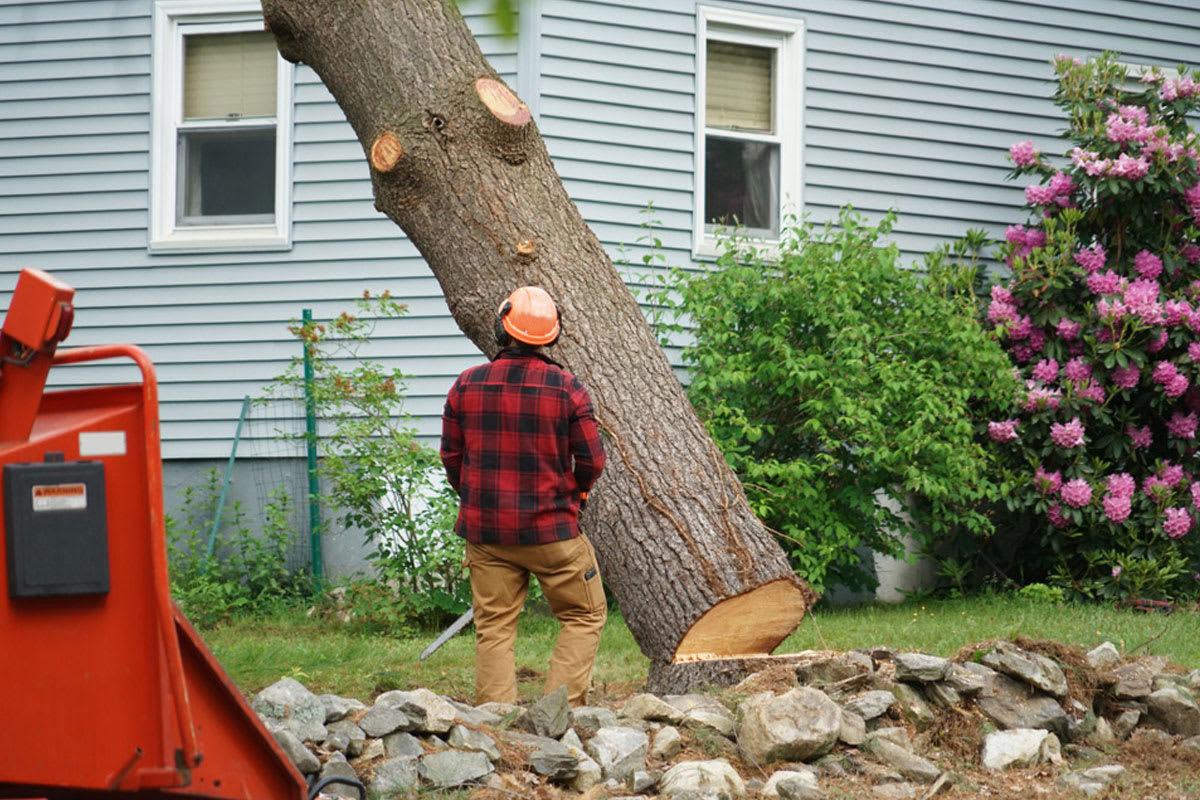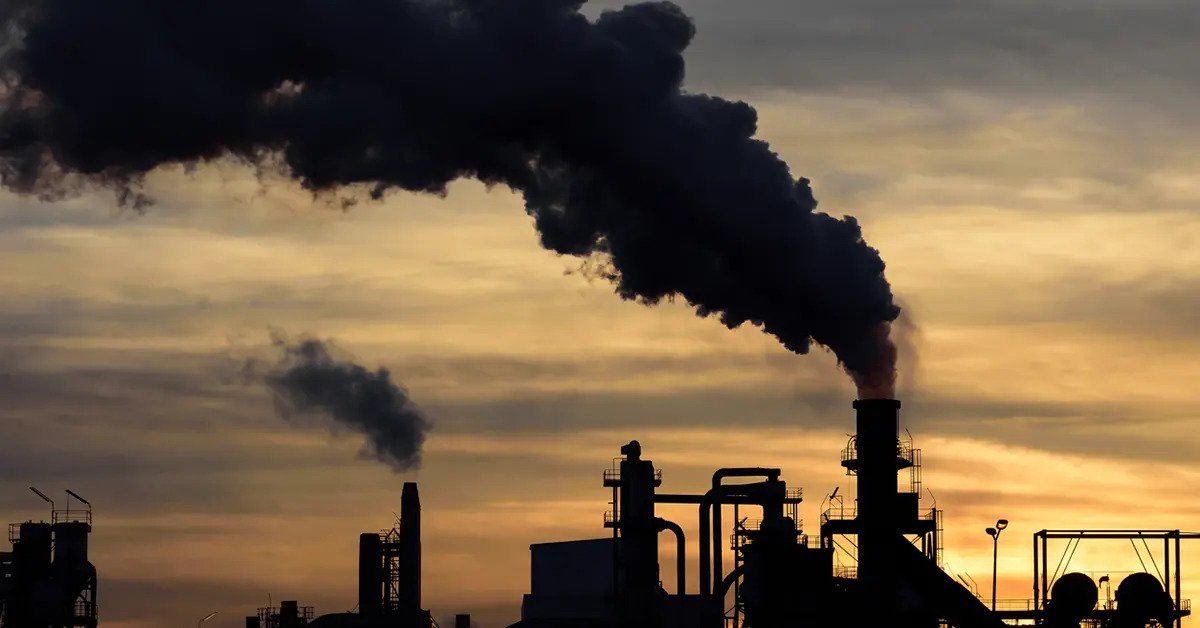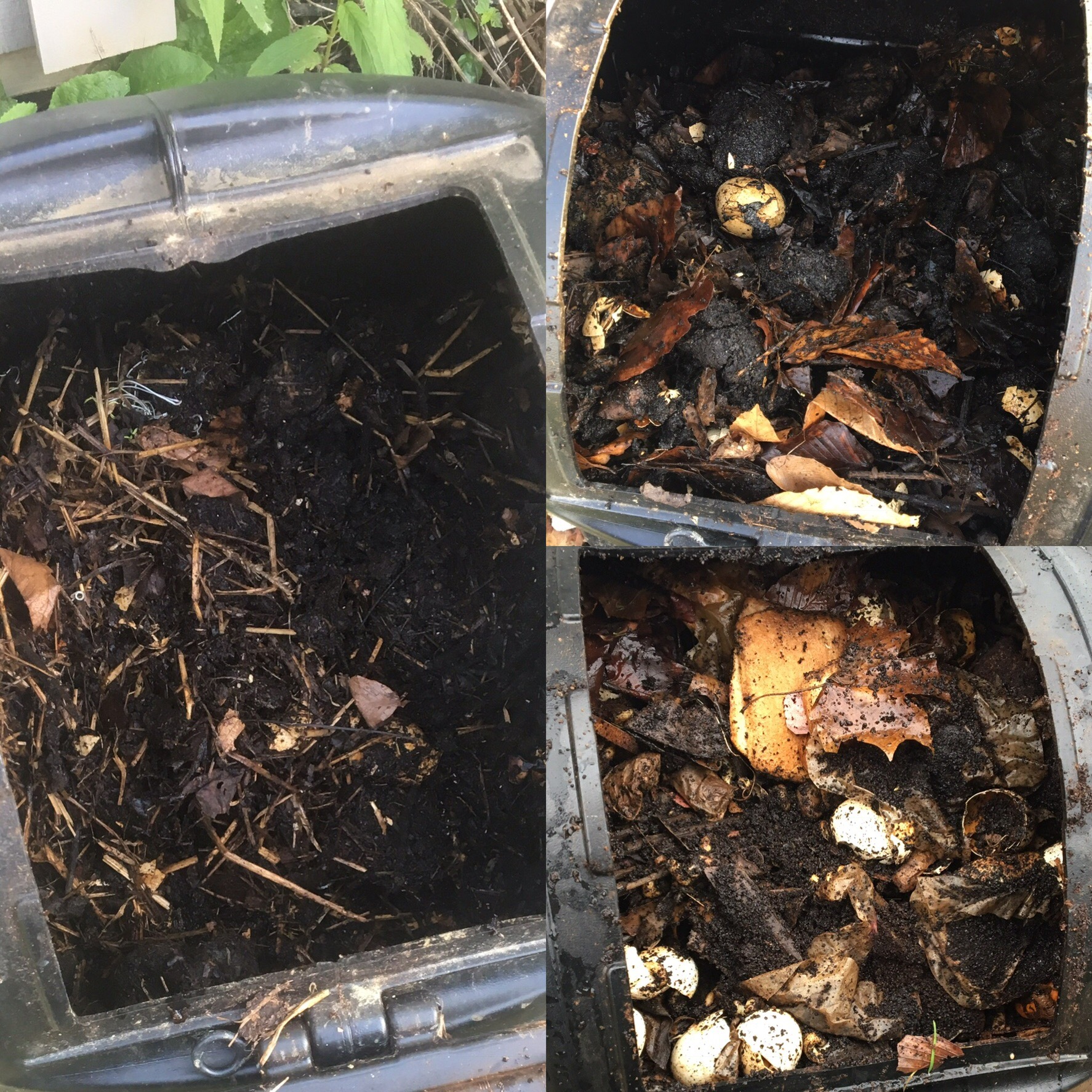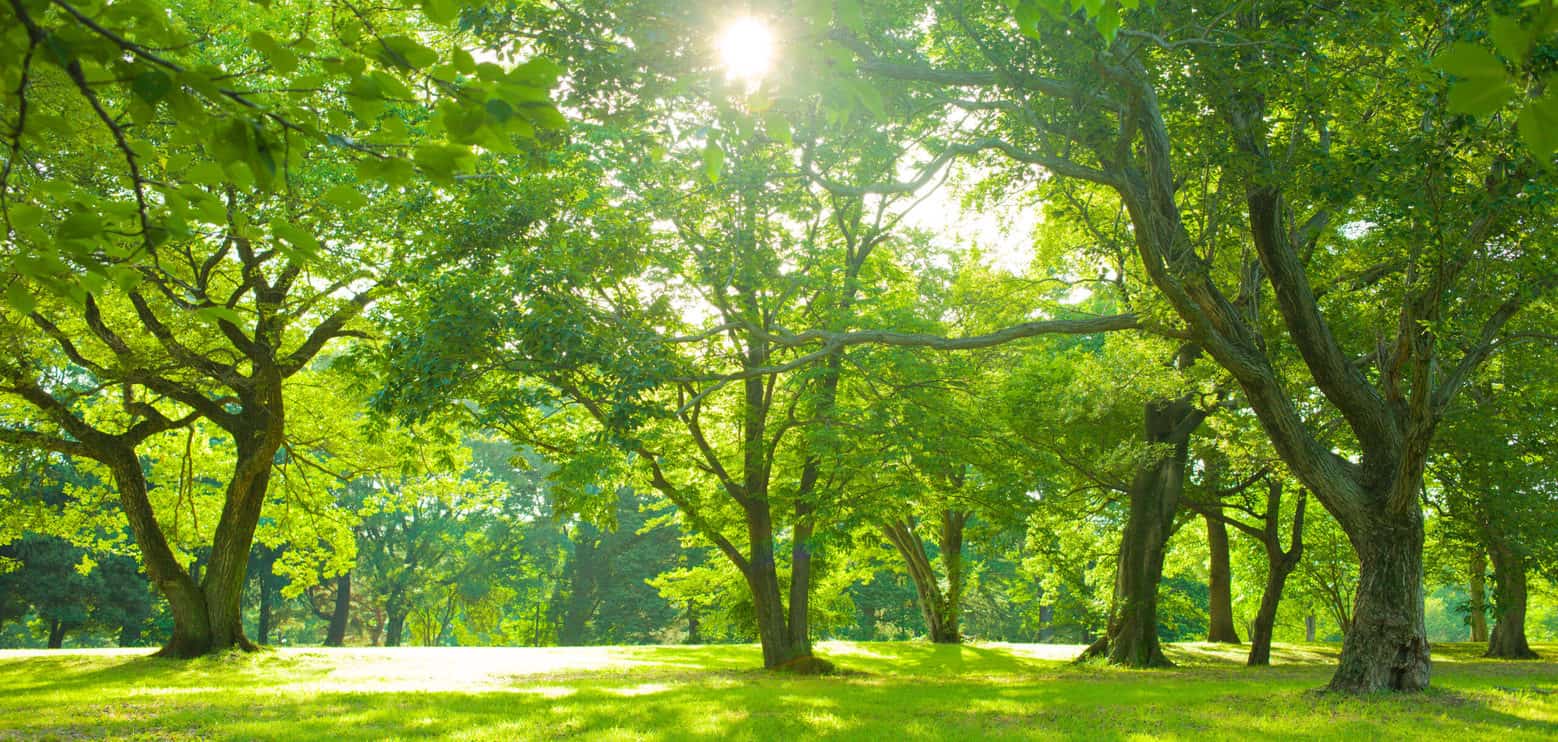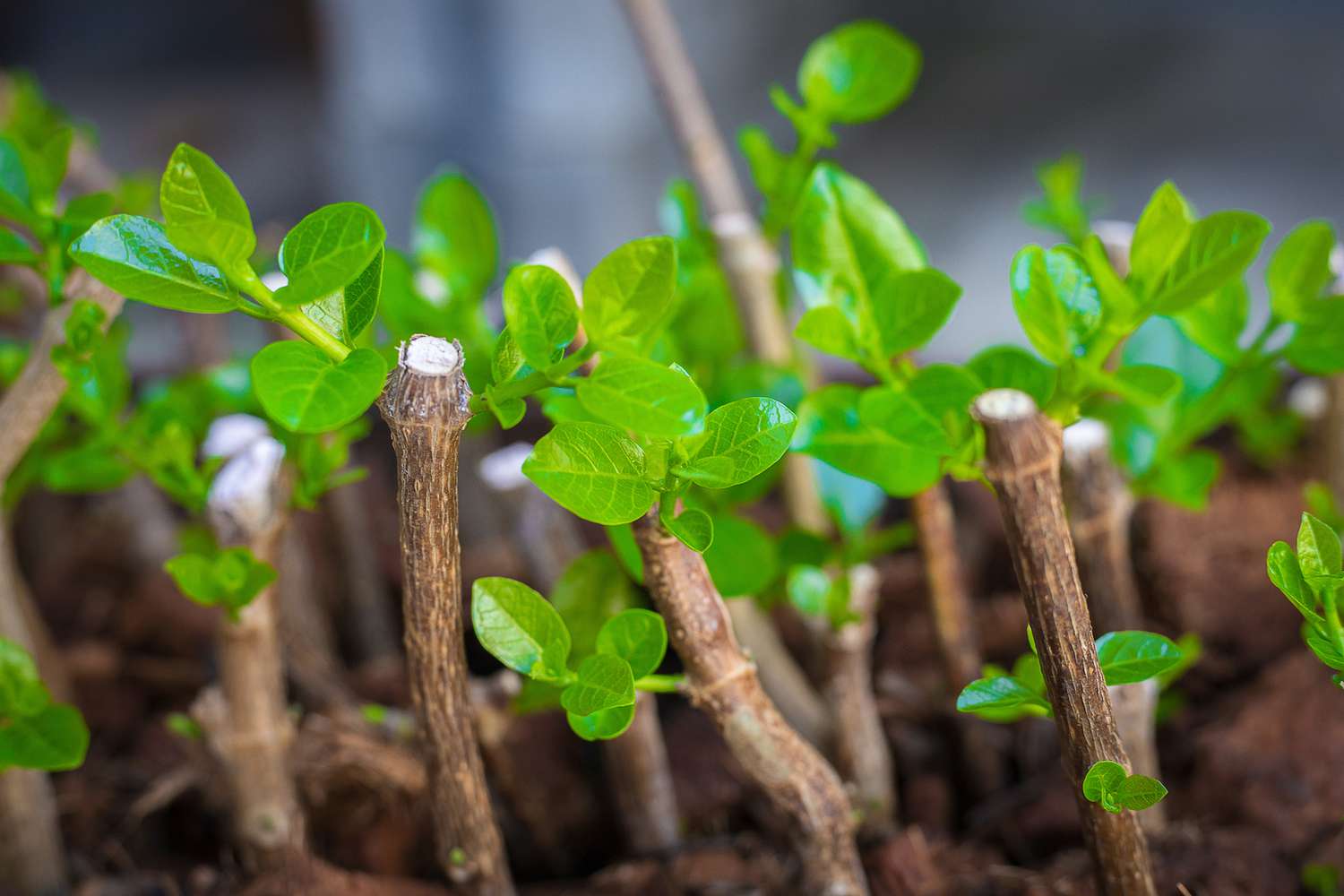Home>Gardening News and Trends>Latest News>Why Are Cutting Down Trees Bad
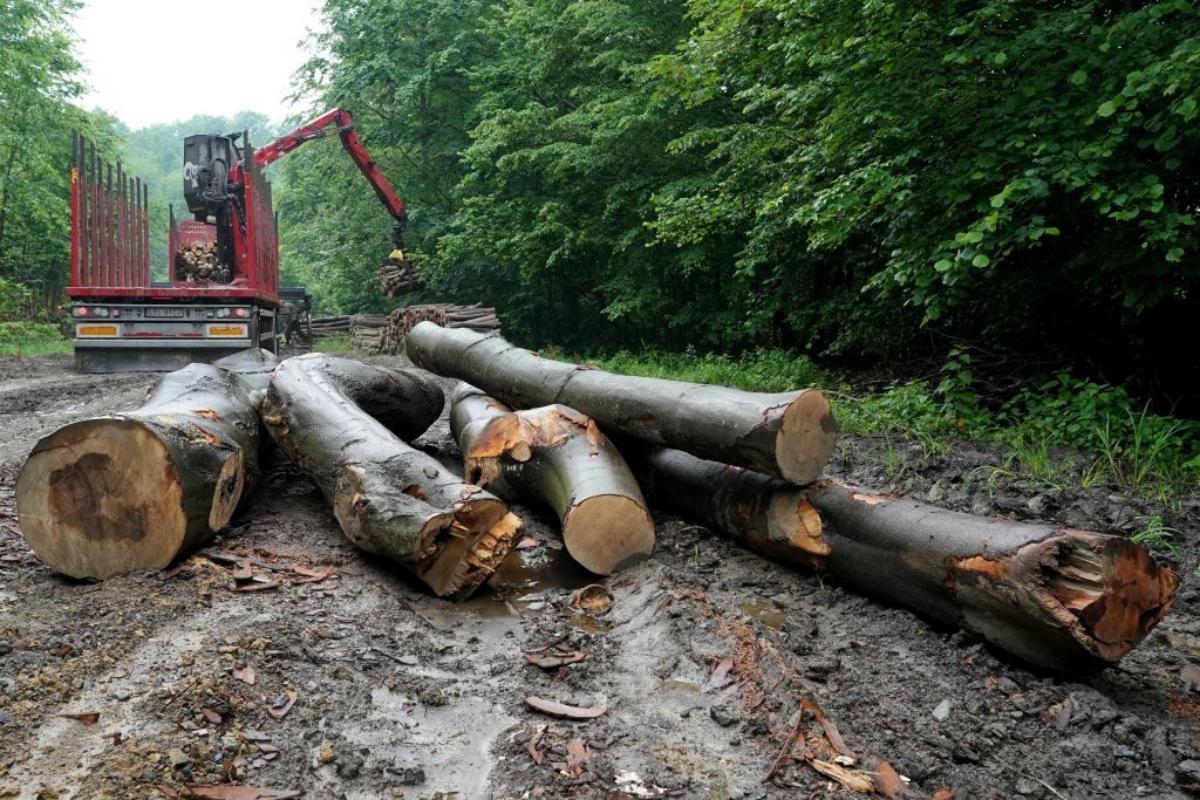

Latest News
Why Are Cutting Down Trees Bad
Modified: January 22, 2024
Discover the latest news regarding why cutting down trees is bad for the environment. Learn about the detrimental effects and the importance of preserving our forests.
(Many of the links in this article redirect to a specific reviewed product. Your purchase of these products through affiliate links helps to generate commission for Chicagolandgardening.com, at no extra cost. Learn more)
Table of Contents
Introduction
Trees are not just essential for their beauty and the shade they provide on a hot summer’s day; they play a vital role in maintaining a healthy and balanced ecosystem. Unfortunately, the widespread practice of cutting down trees, known as deforestation, has become a growing concern worldwide.
This article aims to explore the negative impacts of cutting down trees and shed light on why this practice is harmful to our environment. By understanding the consequences of deforestation, we can work towards implementing sustainable solutions to preserve our forests and safeguard the planet for future generations.
At first glance, it may seem harmless to remove a few trees here and there. However, the cumulative effect of widespread deforestation is disastrous for our ecosystems and the delicate balance of nature.
By removing trees, we disrupt the natural processes that contribute to maintaining a stable climate, clean air and water, and the overall health of our planet. The consequences of cutting down trees are far-reaching and impact various aspects of our environment, economy, and communities.
Let’s delve into the specific environmental impacts of cutting down trees and why it is crucial to address this issue urgently.
Environmental Impact
The environmental impact of cutting down trees is significant and wide-ranging. Trees are integral to the overall health of our planet and perform crucial functions in balancing ecosystems and mitigating the effects of climate change.
One of the most notable consequences of deforestation is the loss of biodiversity. Forests are home to countless species of plants and animals, many of which are endemic and found nowhere else in the world. When trees are cut down, the habitats of these organisms are destroyed, leading to a loss of biodiversity and endangering numerous species.
Deforestation also contributes to climate change. Trees act as carbon sinks, absorbing and storing carbon dioxide from the atmosphere. When trees are cut down or burned, the stored carbon is released back into the atmosphere as carbon dioxide, a greenhouse gas that contributes to global warming. The loss of forests also means there are fewer trees available to absorb carbon dioxide, exacerbating the effects of climate change.
Another environmental impact of cutting down trees is soil erosion and degradation. Trees play a crucial role in preventing soil erosion by providing stability and preventing runoff. Their roots hold the soil together, reducing the risk of landslides and maintaining the fertility of the land. Without trees, the soil becomes vulnerable to erosion, leading to nutrient depletion and reduced agricultural productivity.
In addition to soil erosion, cutting down trees disrupts the water cycle. Trees play a vital role in regulating the water cycle by absorbing rainfall and releasing it slowly into the soil and atmosphere. This process helps prevent floods and droughts. When trees are removed, the balance of the water cycle is disrupted, causing fluctuations in water availability and potentially leading to water scarcity in certain areas.
Furthermore, the negative effects of cutting down trees extend to local communities. Indigenous peoples and local communities depend on forests for their livelihoods, including food, shelter, and traditional medicine. Deforestation robs these communities of their natural resources and disrupts their way of life.
The economic consequences of deforestation are also substantial. Forests provide a range of valuable resources, including timber, medicinal plants, and non-timber forest products. By cutting down trees unsustainably or destroying forests altogether, we not only deplete these resources but also compromise the economic potential of sustainable industries such as ecotourism.
It is crucial to recognize the immense environmental impact of cutting down trees and take proactive measures to address this issue. In the next section, we will explore some alternatives to mitigating the adverse effects of deforestation and preserving our forests for the future.
Loss of Biodiversity
The loss of biodiversity is one of the most significant consequences of cutting down trees and deforestation. Forests harbor a diverse array of plant and animal species, many of which are unique and adapted to specific ecosystems. When trees are removed, these habitats are disrupted, leading to a loss of biodiversity and threatening the delicate balance of ecosystems.
Trees provide crucial shelter, nesting sites, and food sources for a wide variety of wildlife. They provide homes for countless species, including birds, mammals, insects, and reptiles. In fact, it is estimated that over 80% of terrestrial biodiversity can be found in forests.
When trees are cut down, the habitats of these organisms are destroyed, often leading to the displacement or extinction of species. Deforestation is a major driver of species loss, contributing to the alarming decline of many endangered and critically endangered species around the world.
One example of the loss of biodiversity due to deforestation is the destruction of tropical rainforests. These lush ecosystems are home to an extraordinary concentration of biodiversity, with countless species of plants, animals, and insects coexisting in symbiotic relationships. However, deforestation activities such as illegal logging and land conversion for agriculture are decimating these vital habitats and causing irreparable harm to the incredible biodiversity they support.
Another important aspect of biodiversity loss is the impact on ecosystem services. Ecosystem services are the benefits that humans derive from ecosystems, such as clean air and water, soil fertility, and climate regulation. The loss of biodiversity disrupts these services, leading to indirect consequences for human well-being and livelihoods.
For instance, pollination is a vital ecosystem service provided by bees, birds, butterflies, and other pollinators. Trees and plants rely on these pollinators to reproduce and produce fruits and seeds. However, the loss of biodiversity due to deforestation can disrupt pollination networks, leading to decreased crop yields and reduced food security.
The loss of biodiversity also has cascading effects on ecosystem functioning. Each organism contributes to the functioning and stability of an ecosystem in its own unique way. When species disappear, the balance and resilience of ecosystems are compromised, which can have far-reaching consequences for the health of the entire ecosystem.
Preserving and restoring biodiversity is crucial for maintaining the integrity of ecosystems and ensuring the well-being of both wildlife and humans. In the next section, we will explore the link between deforestation and climate change, highlighting the profound implications of cutting down trees on our global climate system.
Deforestation and Climate Change
Deforestation plays a significant role in exacerbating climate change, making it a pressing global concern. Trees act as carbon sinks, absorbing carbon dioxide from the atmosphere through photosynthesis and storing it in their trunks, branches, leaves, and roots. When trees are cut down and burned, this stored carbon is released back into the atmosphere as carbon dioxide.
The accelerated release of carbon dioxide from deforestation contributes to the greenhouse effect, trapping heat in the Earth’s atmosphere and leading to global warming. In fact, deforestation is responsible for approximately 15% of global greenhouse gas emissions, making it a major driver of climate change.
The destruction of forests disrupts the natural carbon cycle. Trees absorb carbon dioxide and release oxygen, playing a vital role in regulating the balance of greenhouse gases in the atmosphere. When trees are lost, there is a reduced capacity to absorb atmospheric carbon dioxide, leading to its accumulation and contributing to the warming of the planet.
Furthermore, deforestation in tropical regions has particularly severe consequences for the global climate. Tropical rainforests are often referred to as “the lungs of the Earth” due to their ability to absorb vast amounts of carbon dioxide. The destruction of these valuable ecosystems not only releases significant amounts of stored carbon dioxide but also diminishes the capacity to continue absorbing it.
As temperatures rise due to climate change, the impacts are felt globally. Melting glaciers, rising sea levels, and extreme weather events such as hurricanes and droughts are just some of the consequences of a warming planet. The loss of forests exacerbates these impacts, as trees play a critical role in mitigating the effects of climate change and maintaining ecosystem stability.
Preserving and restoring forests is crucial for climate change mitigation. By protecting existing forests and implementing sustainable reforestation efforts, we can enhance carbon sequestration, reduce greenhouse gas emissions, and work towards stabilizing global temperatures.
Furthermore, forests have the potential to provide solutions for renewable energy and sustainable practices. Afforestation, which involves planting new forests, can help offset carbon emissions by providing new carbon sinks. Additionally, sustainable agroforestry practices can integrate tree planting with agricultural activities, promoting climate resilience, soil conservation, and diversified livelihoods.
Addressing deforestation and its connection to climate change is not only crucial for the survival of our planet but also for the well-being of present and future generations. In the next section, we will explore the impacts of cutting down trees on soil erosion and degradation, highlighting the importance of maintaining healthy and fertile soils.
Soil Erosion and Degradation
Trees play a vital role in maintaining healthy and fertile soils. Their extensive root systems hold the soil together, preventing erosion and preserving its quality. When trees are cut down, especially on steep slopes or in areas with heavy rainfall, the soil becomes vulnerable to erosion, leading to soil degradation and nutrient depletion.
The roots of trees act as anchors, securing the soil and preventing it from being washed away by rainfall or blown away by wind. Additionally, as leaves and branches fall to the ground, they contribute to the build-up of organic matter, known as leaf litter. This leaf litter acts as a natural mulch, protecting the soil from erosion, retaining moisture, and enriching it with nutrients as it decomposes.
When trees are removed, the protective cover provided by their canopy and root systems is lost. Rainfall hits the exposed soil directly, leading to increased runoff and the transportation of sediments. This runoff not only washes away valuable topsoil but also carries pollutants, such as fertilizers and pesticides, into nearby water bodies, causing water pollution and threatening aquatic ecosystems.
Soil erosion and degradation have significant consequences for agriculture and food production. As topsoil is eroded, the fertility of the land decreases, impacting crop yields and agricultural productivity. Nutrients necessary for plant growth, such as nitrogen, phosphorus, and potassium, are washed away, leaving the soil depleted and unable to support healthy plant growth.
The loss of fertile soil also leads to increased dependency on chemical fertilizers, which further contribute to environmental degradation. Without trees and their role in maintaining healthy soils, farmers are forced to rely on synthetic fertilizers to compensate for the nutrient depletion. These fertilizers can contaminate water sources, disrupt ecological balances, and have detrimental impacts on human health.
Moreover, soil erosion can result in the formation of gullies and landslides, posing risks to infrastructure, communities, and livelihoods. In hilly or mountainous regions, the removal of trees weakens the stability of slopes, increasing the likelihood of landslides during heavy rainfall or seismic activity. These landslides can have devastating consequences, leading to loss of lives and property.
It is essential to recognize the critical role of trees in preventing soil erosion and degradation. Implementing sustainable land management practices, such as reforestation, conservation agriculture, and terracing, can help restore and protect the health of soils. By preserving forests and promoting sustainable land use, we can maintain the integrity of soils, ensure resilient agricultural systems, and protect the livelihoods of farmers and local communities.
In the next section, we will explore the disruptions in the water cycle caused by deforestation and cutting down trees, highlighting the implications for water availability and security.
Water Cycle Disruptions
The presence of trees is crucial for maintaining the balance of the water cycle. Trees play a vital role in regulating the movement of water through evaporation, transpiration, and precipitation. When trees are cut down, the water cycle is disrupted, leading to significant implications for water availability, quality, and overall ecosystem health.
Through the process of transpiration, trees release water vapor into the atmosphere. This moisture contributes to cloud formation and increases the chances of precipitation. Forests act as natural “sponges,” absorbing rainfall and gradually releasing it into the soil, replenishing groundwater supplies and maintaining stable river flow. Without trees, rainfall becomes more intense, leading to increased runoff, flash floods, and a reduced ability for the soil to absorb and store water.
Additionally, trees play a crucial role in preventing water pollution by acting as filters. As rainwater passes through forest canopies and soils, it undergoes natural purification processes, removing pollutants and contaminants. When forests are cleared, water becomes more susceptible to pollution from agricultural runoff, industrial waste, and sedimentation, degrading water quality and threatening aquatic ecosystems.
Deforestation and the loss of trees also disrupt the natural hydrological processes that contribute to maintaining the balance of water resources. Trees absorb water from the soil and release it gradually, reducing the risk of floods during heavy rainfall. They also help regulate the flow of rivers and streams, preventing excessive drying during periods of low rainfall.
Moreover, forests play a crucial role in maintaining the health of wetlands, which are vital ecosystems that provide numerous benefits, including water filtration, flood control, and habitat for many species. The destruction of forests contributes to the degradation of wetlands, compromising their ability to perform these essential functions.
The disruptions in the water cycle caused by deforestation can have profound consequences for water availability and security, particularly in regions where water resources are already scarce. Rivers and streams that depend on forested catchments may experience reduced flow, compromising the water supply for communities, agriculture, and industrial purposes.
Addressing deforestation and promoting sustainable land management practices are crucial steps towards ensuring the proper functioning of the water cycle and maintaining water security. Reforestation efforts, protected area designations, and the implementation of watershed management initiatives can help restore and protect forested areas, ensuring a harmonious and sustainable water cycle.
In the next section, we will explore the negative effects of cutting down trees on local communities, highlighting the social and economic implications associated with deforestation.
Negative Effects on Local Communities
Deforestation and the practice of cutting down trees have significant negative effects on local communities. Indigenous peoples and local communities often depend on forests for their livelihoods, cultural practices, and overall well-being. When trees are dismantled, these communities face various challenges that impact their lives and create a ripple effect throughout the region.
One of the immediate consequences of deforestation is the loss of traditional resources. Forests provide communities with an array of valuable resources, including timber for construction, firewood for cooking and heating, medicinal plants for healthcare, and non-timber forest products for food and income generation. When forests are destroyed, these resources diminish, affecting the subsistence and economic activities of local communities.
Deforestation also disrupts traditional land use and territories, often resulting in the displacement and marginalization of indigenous peoples. Forests hold deep cultural and spiritual significance for many indigenous communities, serving as sacred sites and playing a central role in their identity and way of life. When these forests are destroyed, it results in the loss of cultural heritage and can lead to social disintegration and the erosion of traditional knowledge systems.
Furthermore, the loss of forests can have severe consequences for food security and nutrition. Forests provide a diverse range of wild edible plants, fruits, nuts, and mushrooms that form an essential part of the local diet. The destruction of these forests can disrupt traditional food systems and lead to an increased reliance on imported and processed foods, potentially contributing to malnutrition and health issues.
Deforestation also affects water resources and availability for local communities. Forests play a critical role in regulating the water cycle, ensuring the availability of clean water for drinking, irrigation, and domestic use. When forests are cleared, water sources can become polluted or depleted, creating hardships and health risks for nearby communities.
The loss of forests and the resulting environmental degradation can also lead to increased vulnerability to natural disasters. Trees act as natural buffers, mitigating the impacts of floods, landslides, and soil erosion. Without this protection, communities are more susceptible to the devastating effects of such events, placing lives, homes, and infrastructure at risk.
Economically, deforestation can have long-term negative impacts on local communities. Forests provide opportunities for sustainable income generation through eco-tourism, non-timber forest products trade, and forest restoration initiatives. When forests are destroyed, these economic opportunities are lost, often leading to poverty, unemployment, and social unrest.
It is vital to recognize and respect the rights and knowledge of local communities and engage them in sustainable forest management practices. Supporting community-led initiatives for alternative livelihoods, promoting land tenure rights, and ensuring equitable benefit-sharing are essential steps towards alleviating the negative effects of deforestation on local communities and fostering social and economic well-being.
Next, we will explore the economic consequences of cutting down trees and the importance of implementing sustainable practices to mitigate these impacts.
Economic Consequences
The economic consequences of cutting down trees and deforestation are substantial, affecting local communities, national economies, and global markets. Forests provide a wide range of valuable resources and ecosystem services that contribute to economic well-being and sustainable development.
One significant economic impact of deforestation is the loss of timber resources. Forests are a vital source of timber, which is used in construction, furniture production, and various industries. When forests are cleared unsustainably or destroyed altogether, it depletes the supply of timber, leading to increased costs and decreased availability, affecting industries and livelihoods that depend on this resource.
Deforestation also has implications for the trade of non-timber forest products (NTFPs). NTFPs include a diverse range of products such as medicinal plants, food products, resins, fibers, and handicrafts. These products provide opportunities for income generation and play a significant role in the livelihoods of local communities. However, deforestation reduces the availability of these resources, limiting economic opportunities and potentially driving communities towards poverty.
Forests are also a significant contributor to the tourism industry. Ecotourism, nature-based tourism, and cultural tourism all heavily rely on the beauty and biodiversity of forests. When forests are destroyed, the potential for tourism, including revenue from visitor spending, decreases significantly. This impacts not only local communities but also national economies that rely on tourism as a source of income and employment.
Furthermore, forests play a crucial role in climate regulation, providing valuable ecosystem services that have economic implications. Trees absorb and store carbon dioxide, contributing to climate change mitigation. This has taken on added significance in recent years with the emergence of carbon markets and initiatives aimed at reducing greenhouse gas emissions. Destruction of forests leads to increased carbon emissions, directly impacting the effectiveness of these climate mitigation efforts.
The economic consequences of deforestation also extend to water resources. Forests regulate water flow, improve water quality, and contribute to the availability of clean water for various industries and domestic use. When forests are cleared, the altered water cycle can lead to water scarcity, increased water treatment costs, and the loss of revenue from activities reliant on water, such as agriculture and manufacturing.
Moreover, the negative economic impacts of deforestation are not restricted to local areas. Forest ecosystems provide global environmental benefits, known as ecosystem services. These include carbon sequestration, climate regulation, water cycle regulation, and biodiversity conservation. The loss of these ecosystem services has global economic ramifications, impacting sectors such as agriculture, water management, and climate-sensitive industries worldwide.
Recognizing the economic consequences of cutting down trees is essential for promoting sustainable practices and investment in forest conservation. Implementing policies that value the economic benefits of forests, supporting sustainable forest management, and incentivizing reforestation and restoration efforts are vital steps towards ensuring long-term economic sustainability and creating a green economy.
In the next section, we will explore alternatives to cutting down trees and highlight the importance of sustainable forest management practices.
Alternatives to Cutting Down Trees
While cutting down trees may sometimes seem unavoidable, it is essential to explore and implement alternatives to mitigate the negative impacts of deforestation. Here are some viable alternatives to consider:
- Sustainable Logging: Implementing sustainable logging practices can help minimize the ecological impact of timber extraction. This includes selectively harvesting mature trees, following proper forest management plans, and ensuring the regeneration of trees through reforestation efforts.
- Afforestation and Reforestation: Planting new trees through afforestation and reforestation efforts can help offset the loss of trees and restore forest ecosystems. This includes planting trees in degraded areas, along riverbanks, and in urban spaces to enhance biodiversity, carbon sequestration, and ecosystem services.
- Agroforestry: Integrating trees with agricultural practices through agroforestry systems can provide multiple benefits. Agroforestry combines tree planting with crop cultivation or livestock rearing, enhancing soil fertility, increasing biodiversity, and diversifying income sources for farmers.
- Reducing Consumption: Reducing our consumption of products derived from trees, such as paper and wood, can help alleviate the pressure on forests. Opting for digital documents, recycling paper, and using sustainable alternatives like bamboo or recycled wood products are ways to reduce our impact.
- Conservation and Protected Areas: Establishing and effectively managing conservation areas and protected zones can help preserve critical forest habitats. These areas should be legally protected, properly managed, and supported by sustainable tourism and community engagement initiatives.
- Implementing Sustainable Land Use Practices: Encouraging and supporting sustainable land use practices, such as organic farming, agroecology, and regenerative agriculture, can reduce the need for land conversion and promote more environmentally friendly approaches to food production.
- Investing in Research and Development: Supporting research and development efforts focused on finding alternatives to wood-based products and promoting sustainable materials can reduce the demand for timber and its associated environmental impacts.
- Education and Awareness: Promoting education and awareness on the importance of forest conservation and sustainable practices is crucial. This includes educating communities about the value of forests, providing training on sustainable land management techniques, and raising awareness among consumers about the impact of their choices.
Implementing these alternatives requires collaboration between governments, industries, local communities, and individuals. It is essential to prioritize sustainable forest management and ensure the protection of forests for their ecological, economic, and cultural value.
In the next section, we will summarize the key points discussed and reiterate the importance of addressing deforestation for the well-being of our planet and future generations.
Conclusion
Deforestation and the practice of cutting down trees have far-reaching consequences on our environment, biodiversity, local communities, and economies. The negative impacts of deforestation are evident in the loss of biodiversity, increased climate change, soil erosion and degradation, disruptions to the water cycle, and adverse effects on local communities.
Recognizing the importance of trees and forests in maintaining a healthy and balanced ecosystem is crucial for the well-being of our planet and future generations. To address the challenges of deforestation, it is essential to explore alternatives such as sustainable logging, afforestation and reforestation, agroforestry, and reducing consumption of wood-based products.
Conservation and protected areas, implementing sustainable land use practices, investing in research and development, and promoting education and awareness are also key avenues to mitigate the negative impacts of cutting down trees.
It is the responsibility of governments, industries, communities, and individuals to work together and prioritize sustainable forest management. We must protect our forests, respect the rights and knowledge of indigenous peoples, and promote equitable and sustainable practices for the benefit of both current and future generations.
By preserving forests and embracing sustainable alternatives, we can ensure the continued provision of ecosystem services, economic opportunities, and cultural heritage that forests provide. Let us commit to taking actions today to safeguard our forests and shape a more sustainable and resilient future.

